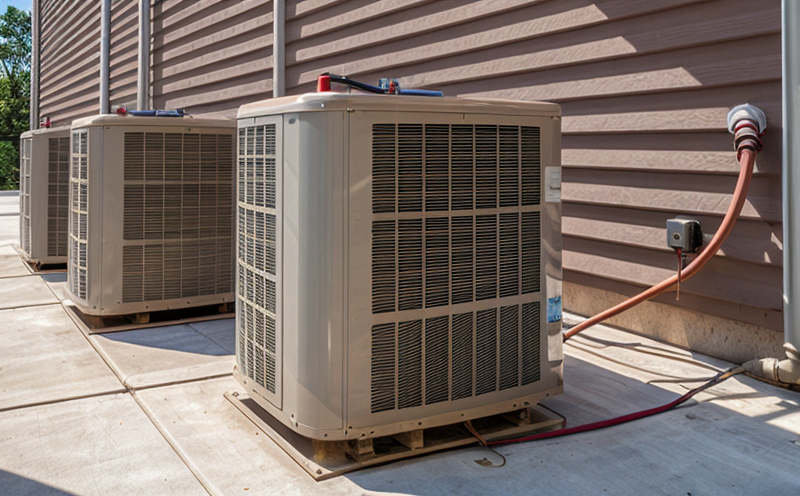EN 14825-2 Seasonal Efficiency Evaluation
The EN 14825 series of standards provides a framework for evaluating and labeling the seasonal efficiency of heating, ventilation, and air conditioning (HVAC) systems. Specifically, EN 14825-2 focuses on the seasonal performance factor (SPF), which is used to determine the overall energy consumption efficiency of HVAC equipment over one or more seasons.
This evaluation method considers the real-world operating conditions that HVAC systems encounter during different periods of the year. It takes into account factors such as outdoor temperature variations, indoor set point temperatures, and system operation modes. The goal is to provide a realistic assessment of an HVAC system's energy efficiency under typical operational conditions.
The process involves measuring the energy consumption of the system over a defined period (typically one year), while also recording the corresponding heating or cooling demand during that time. By comparing these values, the seasonal performance factor can be calculated to provide a single metric for evaluating the overall energy efficiency of the HVAC system.
EN 14825-2 is particularly important in regions where there are significant variations in temperature throughout the year. It ensures that HVAC systems are not only efficient during peak conditions but also perform well under typical seasonal operating conditions. This approach helps to reduce energy consumption, lower operational costs, and promote more sustainable building practices.
To conduct an EN 14825-2 evaluation, the system must be installed in a facility that meets certain requirements specified by the standard. These include having a stable indoor environment, accurate temperature and humidity sensors, and a continuous monitoring system for energy consumption. The testing period is typically one year, during which detailed records of both the HVAC system's performance and the environmental conditions are kept.
The evaluation process involves several key steps:
- Installation and calibration of measurement instruments
- Data collection over a defined period (typically one year)
- Analysis of collected data to determine energy consumption and demand
- Calculation of the seasonal performance factor (SPF)
The results of this evaluation can be used by quality managers, compliance officers, R&D engineers, and procurement teams to make informed decisions about HVAC system selection, installation, and maintenance. It provides a valuable tool for improving energy efficiency in buildings while ensuring regulatory compliance.
Scope and Methodology
| Aspect | Description |
|---|---|
| System Type | The evaluation applies to all types of HVAC systems, including air conditioners, heat pumps, and furnaces. |
| Testing Period | Data is collected over a one-year period to account for seasonal variations in temperature and demand. |
| Measurement Points | Includes indoor and outdoor temperatures, humidity levels, and energy consumption data from the HVAC system. |
| Data Analysis | The collected data is analyzed to calculate the seasonal performance factor (SPF). |
Benefits
- Improved energy efficiency and reduced operational costs.
- Enhanced compliance with international standards and regulations.
- Promotion of sustainable building practices by encouraging the use of more efficient HVAC systems.
- Accurate data for decision-making in HVAC system selection, installation, and maintenance.
- Easier identification of areas where energy consumption can be reduced without compromising comfort or functionality.
International Acceptance and Recognition
- The SPF metric is widely recognized in Europe and other parts of the world as a reliable indicator of HVAC system efficiency.
- Many countries have adopted EN 14825-2 as part of their national standards for energy efficiency labeling.
- The results of an EN 14825-2 evaluation are accepted by various regulatory bodies and certification organizations.
- The methodology is consistent with other international standards such as ASHRAE, which further enhances its credibility and acceptance globally.





